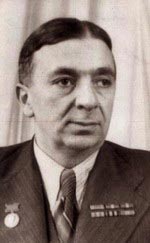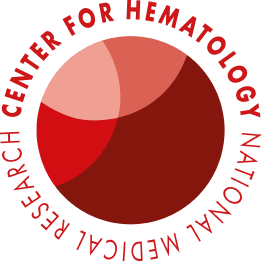
Andrey A. Bagdasarov (Bagdasaryan) (04 [16] .02.1897 - 08.26.1961), full member of the Academy of Medical Sciences of the USSR, Doctor Hematologist of the Ministry of Health of the USSR, twice laureate of the Stalin Prize for the development of new methods of preserving blood and medicinal preparations from blood (1946, 1952), Honored Scientist of the RSFSR (1963). He was awarded two Orders of Lenin, two Orders of the Red Star, as well as medals.
Andrey Bagdasarov was born on February 15, 1897 in Kharkov. In 1923 he graduated from the medical department of the 2nd Moscow Institute (later transformed into the 2nd Moscow Medical Institute) and began working there. In 1926 he was sent to act as the Deputy Director of the newly created, the first of its kind, Institute of Blood Transfusion. In 1931 he became a professor at the Institute. From 1928-1932 he served as the acting Deputy Director.
Bagdasarov acted as the Director of the Central Institute of Hematology and Blood Transfusion and was the Head of the Department of Hospital Therapy at the 2nd Moscow Medical Institute since 1932
By 1935, at the Central Institute, under the leadership of Andrey Bagdasarov, a number of blood preservation methods were developed, in particular, "glucose-citrate" and a method that used "IPC liquid". In that same year, these achievements in the field of transfusiology were presented at the International Congress in Rome, and in 1937 - in Paris. The method of stored blood transfusion, introduced for the first time into worldwide medical practice, was a turning point in the history of blood transfusion.
During the war, Bagdasarov was the Chief Transfusiologist of the Soviet Army. It was he and P.L. Seltsovsky who compiled the first instructions for military doctors on blood transfusion.
In the post-war years, Bagdasarov made great efforts to further the development of both transfusiology and hematology. Specifically, efforts were focused on the problem of the Rh factor and the advancement of immunohematology. New research had also begun on the preservation of tissues and bone marrow for transplantation in the clinic and the fractionation of plasma proteins in order to obtain valuable therapeutic blood products.
With the active assistance of Andrey Bagdasarov, in-depth studies were pursued with the goal of deciphering etiopathogenesis, optimizing diagnosis and treatment, as well as gaining more knowledge about morphological aspects of various forms of anemia, leukemia and, hemorrhagic diathesis (H. H. Vlados, M. S. Dultsin, M.O. Rauschenbach, N.M. Nemenova, M.P. Khokhlova, G.V. Osechinskaya, F.E. Feinstein, etc.).
Andrey Bagdasarov was one of the outstanding organizers of Soviet health care. In 1930, the Kharkov Institute of Blood Transfusion was established, followed by Leningrad, Kirov, and republican institutes of blood transfusion in 1931: Georgian, Uzbek, Azerbaijan, Lvov, Armenian. Multilevel blood transfusion stations were also created (republican, regional, and city). In 1936 Bagdasarov became the Chief Hematologist of the USSR Ministry of Health.


